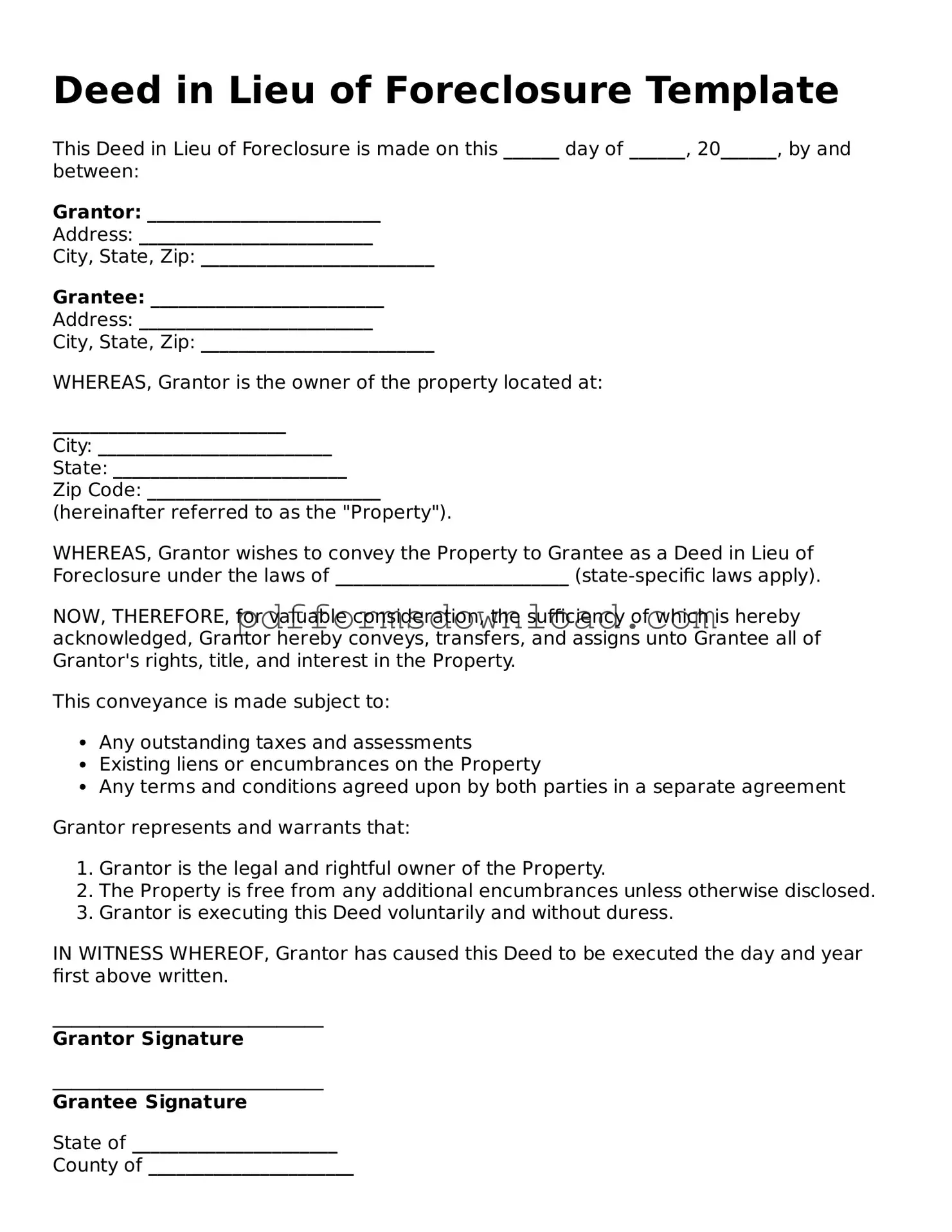What is a Deed in Lieu of Foreclosure?
A Deed in Lieu of Foreclosure is a legal process that allows a homeowner to voluntarily transfer the ownership of their property back to the lender in order to avoid foreclosure. This option can be beneficial for homeowners who are struggling to make mortgage payments and wish to avoid the lengthy and often stressful foreclosure process. By agreeing to a Deed in Lieu, the homeowner can typically resolve their mortgage obligation more quickly and with less damage to their credit score compared to a foreclosure.
Who is eligible for a Deed in Lieu of Foreclosure?
Eligibility for a Deed in Lieu of Foreclosure varies by lender, but generally, homeowners who are facing financial hardship and are unable to continue making mortgage payments may qualify. Lenders often look for homeowners who have exhausted other options, such as loan modifications or short sales. It's important to communicate openly with the lender about your financial situation to determine if this option is available to you.
What are the benefits of choosing a Deed in Lieu of Foreclosure?
Choosing a Deed in Lieu of Foreclosure can offer several advantages. It allows homeowners to avoid the lengthy foreclosure process, which can take months or even years. Additionally, it can lead to a quicker resolution of the mortgage debt, potentially resulting in less damage to the homeowner's credit report. Furthermore, some lenders may offer financial assistance or relocation benefits to help ease the transition after the deed is transferred.
What are the potential drawbacks of a Deed in Lieu of Foreclosure?
While there are benefits, there are also potential drawbacks to consider. Homeowners may still face tax implications, as forgiven mortgage debt could be considered taxable income. Additionally, not all lenders accept Deeds in Lieu, and those that do may have specific requirements or conditions that must be met. It's essential to fully understand these implications and consult with a financial advisor or attorney before proceeding.
How does the process of obtaining a Deed in Lieu of Foreclosure work?
The process typically begins with the homeowner contacting their lender to express their interest in a Deed in Lieu of Foreclosure. After an initial assessment, the lender may require the homeowner to submit documentation regarding their financial situation. If approved, the lender will provide a Deed in Lieu form, which the homeowner must sign. Once the deed is executed, the lender will take ownership of the property, and the homeowner will be released from the mortgage obligation.
Can a Deed in Lieu of Foreclosure affect my credit score?
Yes, a Deed in Lieu of Foreclosure can impact your credit score, although typically less severely than a foreclosure. While the exact effect varies based on individual credit histories, it is important to note that lenders may report the deed transfer to credit bureaus. This can result in a negative mark on your credit report, but it may be less damaging than a full foreclosure. Taking proactive steps to manage your credit after the deed is executed can help mitigate some of the effects.
